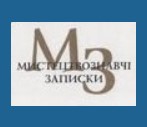КОНЦЕПТУАЛЬНЕ МИСТЕЦТВО У ДИЗАЙНІ
CONCEPTUAL ART IN DESIGN
Author(s): Olha KostiukSubject(s): Visual Arts, Semiology, Aesthetics, Cognitive Psychology
Published by: Національна академія керівних кадрів культури і мистецтв
Keywords: conceptual art; concept; design; hairstyle;
Summary/Abstract: The purpose of the article is to consider the concept and determine its components, in the development and analysis of conceptual art in modern design. Methodology. The following methods are used: analysis, synthesis, as well as semiotic, hermeneutic, psychoanalytic. The scientific novelty of the work lies in the study of conceptual art on the examples of hairstyle design, hairdressing collections, and an attempt to comprehend the underlying contexts and meanings in the process of interpretation. Conclusions. Given the fact that modern design as a polymorphic entity with a dominant innovative component actualizes the activities of the new generation and acquires the features of intellectual comprehension of visual information, it can be argued that conceptual art is a priority in this direction. The concept as the initial concept of the conceptual is defined as a multilevel formation of content, the semantic meaning of the sign, which requires a process of interpretation. Through J. Dili's study of the theory of sign systems, the interpretation of the concept in the system of traditions, rituals, customs, which is perceived differently by different people due to belonging to different cultures, societies, etc., becomes clear. It is proved that the creation of the concept is based on processes based on individual practice, personal associations, and the main types of metaphorical and allegorical thinking that arise from the experience of not only cognitive but also substantive activity. The study of conceptual art on examples of hairstyle design, hairdressing collections shows the peculiarity of such works of art: they are not always functional and are not always defined as a utilitarian object, but the use of unusual color, shape, progression, silhouette lines, the fullness of space and volume with signs and symbols, require a multilevel semantic definition in the process of interpretation through intellectual comprehension of the inherent contexts and meanings.
Journal: Мистецтвознавчі записки
- Issue Year: 2021
- Issue No: 40
- Page Range: 15-21
- Page Count: 7
- Language: Ukrainian

